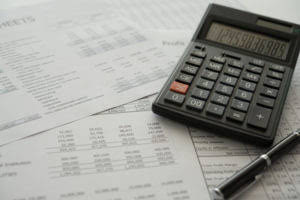Content
You want to make sure this is the case for this specific business asset account. When you compile the above data into an accounts chart you can see whether all of your accounts have the expected normal balance. This quick chart tells you what the normal balance is for each type of account. You can also see how a debit or credit entry impacts each type of account. As noted earlier, expenses are almost always debited, so we debit Wages Expense, increasing its account balance. Since your company did not yet pay its employees, the Cash account is not credited, instead, the credit is recorded in the liability account Wages Payable.
For example, a company’s checking account has a credit balance if the account is overdrawn. Explore the history of GAAP and learn about the accounting factors that influence GAAP. In accounting, the general journal records every financial transaction of a business. Explore the definition, format, and examples of a general journal, and understand its importance in accounting.
Featured Products
Regardless of what elements are present in the business transaction, a journal entry will always have AT least one debit and one credit. You should be able to complete the debit/credit columns of your chart of accounts spreadsheet . In these instances, the normal balance is a debit balance. As you can see, each transaction has two corresponding journal entries.
In a standard journal entry, all debits are placed as the top lines, while all credits are listed on the line below debits. When using T-accounts, a debit is the left side of the chart while a credit is the right side. The types of accounts lying on the left side of these equations carry a debit balance while those on the right-side carry https://online-accounting.net/ a credit balance. In Accounting and, finance, payable may work as either a debit or a credit. It is due to payable accounts being liability accounts, and it ought to have a credit amount. The credit balance points to the balance that an organization incurs to its dealers. Liability and capital accounts normally have credit balances.
Normal Petty Cash Account Balance
Whenever cash is received, the asset account Cash is debited and another account will need to be credited. Since the service was performed at the same time as the cash was received, the revenue account Service Revenues is credited, thus increasing its account balance.
- Loans payable and notes payable are both liabilities accounts.
- Losses are also recorded as a debit on the normal balance.
- We offer next day delivery in Europe and worldwide express shipping on all products, ensuring fast, tracked, and safe delivery.
- The same rules apply to all asset, liability, and capital accounts.
- To increase the value of an account with normal balance of credit, one would credit the account.
All of these products or services are prime examples of accounts payable. The companies usually do not pay for these services or products in cash, because it can impact the cash positions in the balance sheets of the company. The normal balance shows debit in the accounts payable when the left side is positive.
Normal Balance
As shown in the figure, above the bubble point as pressure increases Bo decreases. Next we look at how to apply this concept in journal entries.
Certain accounts are used for valuation purposes and are displayed on the financial statements opposite the normal balances. The debit entry to a contra account has the opposite effect as it would to a normal account. The normal balance appears debit in the payable accounts when the left portion is positive. Although, as far as the accounting equation is concerned, the account assets are more than the addition of share owner’s liabilities and equity. The normal balance is defined as the balance which would show either credit or debt when all the data from the journal is extracted.
Current Operating Performance Concept Of Income The changes here would include the changes in price level and the changes due to the cumulative effects of accounting change. Pressure Vs Volume Analysis Essay ) and one below the bubble point was used.
Why Do Accountants Use Debit Dr And Credit Cr?
For example, a debit to the accounts payable account in the balance sheet indicates a reduction of a liability. The offsetting credit is most likely a credit to cash because the reduction of a liability means the debt is being paid and cash is an outflow. For the revenue accounts in the income statement, debit entries decrease the account, while a credit points to an increase to the account. Accountants record increases in asset, expense, and owner’s drawing accounts on the debit side, and they record increases in liability, revenue, and owner’s capital accounts on the credit side. An account’s assigned normal balance is on the side where increases go because the increases in any account are usually greater than the decreases. Therefore, asset, expense, and owner’s drawing accounts normally have debit balances.
This usually happens when the company extends credit to its suppliers; the credit is reported as an expense. The expense shifts the balance of the accounts payable from the credit side to the debit side. Expenses normally have debit balances that are increased with a debit entry. Since expenses are usually increasing, think “debit” when expenses are incurred. In a T-account, their balances will be on the left side.
This is recorded on the normal balance as a debit for the company according to the double-entry bookkeeping method. Accurate accounting ensures that your business stays on top of its financial obligations. Doing this right is also a way to measure your business’s success over time, providing valuable insights that can inform your long-term financial planning. The information in your accounts will also be used to compile financial statements for shareholders and other external parties.
Our new size guide suggests the best size for you based on your dimensions. The guide has been designed to reflect the measurements of 200+ people, and we are continually adding more data. The same rules apply to all asset, liability, and capital accounts. The Cash account stores all transactions that involve cash receipts and cash disbursements.
What Is The Journal Entry If A Company Pays Dividends With Cash?
For instance, if a firm takes out a loan to purchase equipment, it would debit fixed assets and at the same time credit a liabilities account, depending on the nature of the loan. The abbreviation for debit is sometimes “dr,” which is short for “debtor.”
- In accounting, the general journal records every financial transaction of a business.
- For accounts receivables that are on the assets side, the normal balance is usually debit.
- Discover what goes into these meticulous ways of keeping records and the significance of journal entries and trial balance to accurate accounting.
- For example, a contra asset account such as the allowance for doubtful accounts contains a credit balance that is intended as a reserve against accounts receivable that will not be paid.
- Some examples of accounts payables are services such as transportation and logistics, licensing, or marketing services.
In a T-account, their balances will be on the right side. So what’s the normal balance for stockholder’s equity? So credits INCREASE stockholder’s equity and debits DECREASE stockholder’s equity. When we first have the gain, we CREDIT OCI, which increases stockholder’s equity. Then as we amortize the gain, we DEBIT to OCI reduces stockholder’s equity. A general ledger is the record-keeping system for a company’s financial data, with debit and credit account records validated by a trial balance.
Liabilities normally carry a credit balance while assets carry a debit balance. normal balance Expenses carry a debit balance while incomes carry a credit balance.
Therefore, the liabilities’ area of the company has been boosted up by 1,000 USD. At a similar point, the company has also gotten assets worth 1,000 USD. Debit pertains to the left side of an account, while credit refers to the right. Learn the definition and purpose of accounting in business. Give examples of ALOE accounting, and explain the importance of accounting.
When the gain was originally recorded, it INCREASED stockholder’s equity. The amortization is also a credit to net periodic pension cost , which means the gain is reducing our expense.








